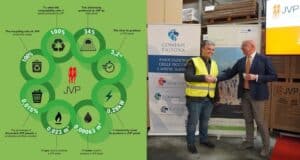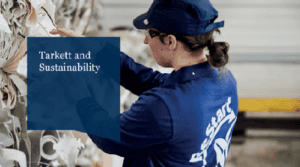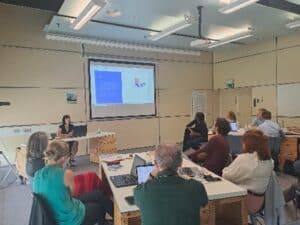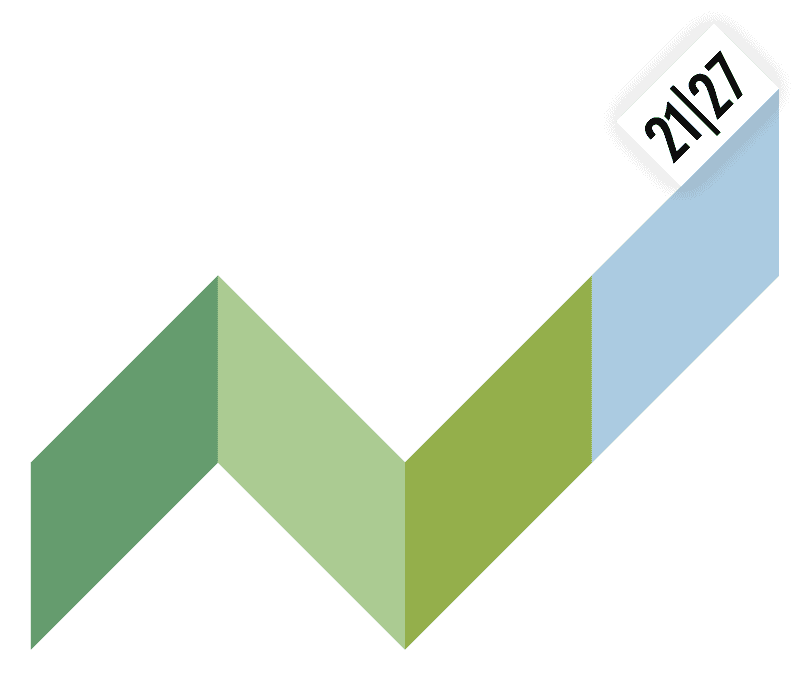The Cradle-Alp project is dedicated to advancing cradle-to-cradle approaches and circular design within industrial processes across the Alpine region, with the aim of establishing a circular economy model. As part of this initiative, several study visits were conducted to exemplify successful C2C implementation and inspire similar endeavors that we will try to foster during our piloting phase in the following months.
JVP
JVP is an Italian company founded in 1998 in Piove di Sacco, situated between Padua and Venice. They specialize in raised steel floors, with their steel panels crafted from galvanized steel sheet encapsulating a chipboard core made of recycled wood or gypsum fiberboard, sealed using a simple yet effective system with four peripheral folds. Apart from being Italy’s leader in production potential within the sector, they are pioneers in environmental responsibility – they are, for example, the first in Italy to obtain C2C certification. During our study visit, we gained insights into JVP’s extensive certifications, emphasizing product quality and environmental responsibility. Mr. Carlo Valerio, co-owner of JVP, shared perspectives on the company’s ethical choices and highlighted the advantages of adopting C2C approaches, including risk reduction, increased competitiveness, and alignment with European sustainability goals. An interview with Mr. Carlo Valerio further elucidated JVP’s commitment to sustainability, available here.

TARKETT AB
Tarkett is a worldwide company leader in flooring and sports surface solutions. The company sells 1.3 million square meters of flooring daily across over 100 countries, offering a diverse range of commercial flooring products such as vinyl, linoleum, carpet, wood, laminate, rubber, turf, and tracks. Tarkett is committed to delivering high-performing solutions that blend quality, cutting-edge designs, and a strong emphasis on sustainability and wellbeing. Sustainability is integral to Tarkett’s operations, influencing product design, raw material selection, and end-of-life recycling practices. The company prioritizes reducing its carbon footprint, necessitating significant transformations within its products and value chain through collaboration with customers. Since 2010, Tarkett has diverted over 115,000 tons of flooring waste from landfills and incineration through its ReStart take-back and recycling program. By 2030, the company aims for at least 30% of its raw materials to be sourced from recycled materials. The company develops products based on the cradle-to-cradle (C2C) principle and certification, emphasizing material transparency through Material Health Statements. These statements offer complete visibility into product composition, ensuring the avoidance of harmful substances and continual product improvement. Tarkett’s commitment to sustainability extends throughout its entire value chain, with greenhouse gas emissions expected to be reduced by 50% in factories and 30% across the value chain by 2030. You can find more about the company here.

AquafilSLO
During a partner meeting in Ljubljana, a study visit was organized by CCIS. AquafilSLO, a leading manufacturer in Slovenia, focuses on polyamide polymers and synthetic fibers, serving as a center for research and development for the circular economy. Their innovative technologies enable the recovery and regeneration of materials from post-consumer and pre-consumer waste, resulting in Econyl, a regenerated nylon 6. This product holds the Cradle to Cradle Gold certificate, meeting strict criteria across various sustainability categories. AquafilSLO’s example serves as a valuable case study, particularly in regions with limited C2C certified products, demonstrating the feasibility and benefits of circular economy practices.
The visit highlighted several key insights:
1. Circular economy is profitable: AquafilSLO’s success demonstrates that profitable business operations can align with environmental responsibility.
2. Innovation drives circular economy goals: AquafilSLO’s innovative technologies have been crucial to its success in the circular economy.
3. C2C creates value: AquafilSLO’s Econyl regenerated nylon yarn exemplifies the creation of value from waste.
4. C2C is an ongoing journey: AquafilSLO’s commitment to continuous improvement underscores the evolving nature of the circular economy.
You can find more about Aquafil, here.

CONCLUSION
All these companies serve as a model for companies transitioning to a circular economy, emphasizing the importance of innovation, collaboration, and continual improvement. Key lessons learned from the visits include the significance of certified procedures in promoting greener production methods and the holistic nature of C2C, which encompasses environmental and social aspects. These insights underscore the importance of collaborative efforts among businesses, stakeholders, and policymakers to drive sustainable industrial practices forward.
Follow us for the upcoming examples of good practices that we will publish in the following months.
Written by Urška Spitzer, Chamber of Commerce and Industry of Slovenia.



